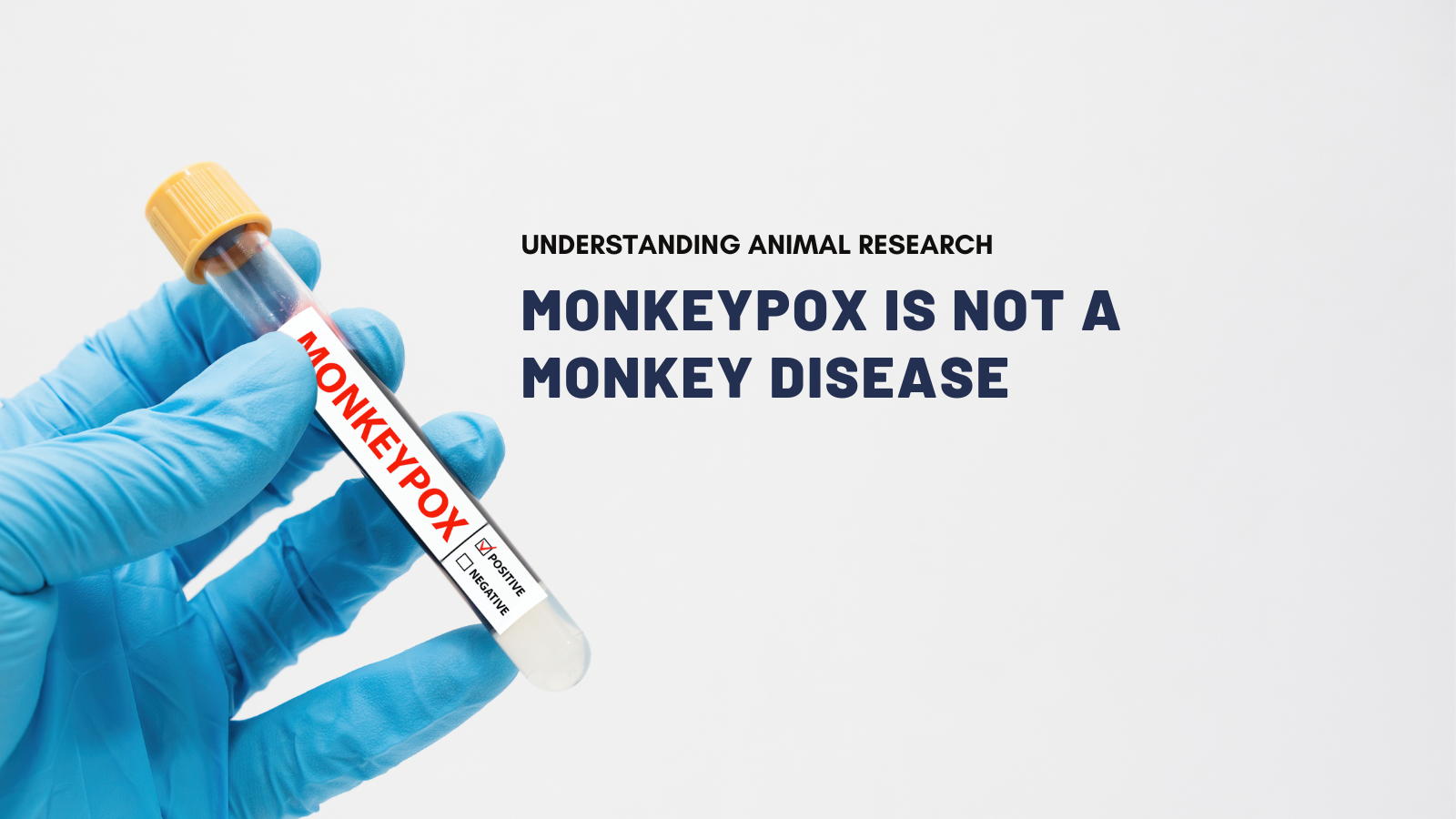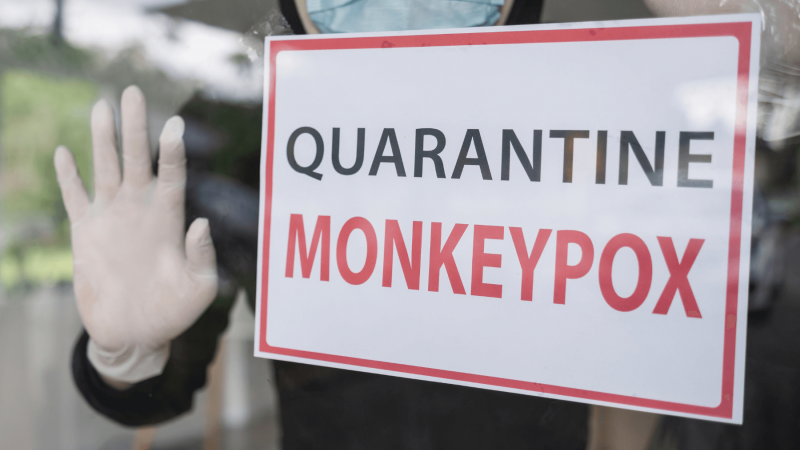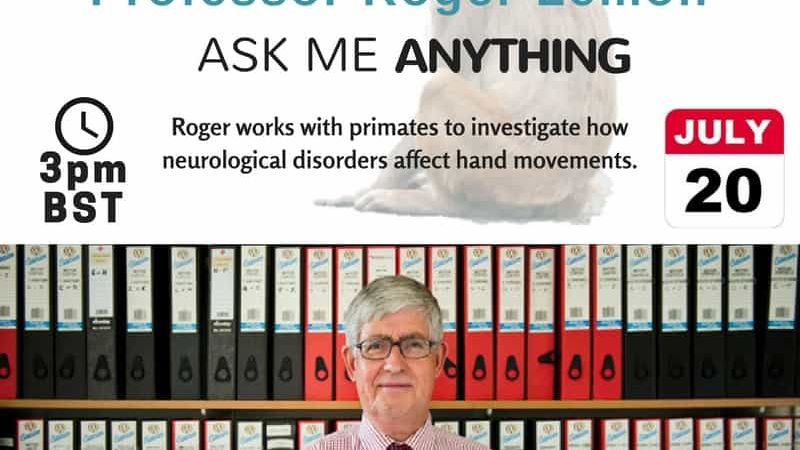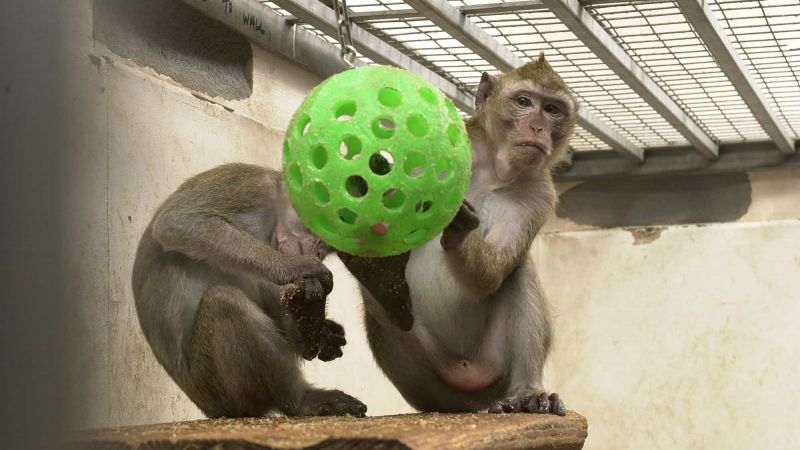Monkeypox is not a monkey virus
Monkeypox has made the headlines these last few months after unprecedented waves of contagion hit Europe. The monkeypox virus is actually most likely a rodent pathogen that only occasionally infects humans and monkeys. Closely related to the smallpox virus, it was first identified in research monkeys, hence its name. Monkey models of the disease have been used to better understand the virus and test the vaccines that are currently being delivered.
The monkey in monkeypox
So why monkeypox? The name comes from the discovery of the virus. The monkeypox virus was isolated in 1958 from Asian macaques imported to Denmark for a Copenhagen-based research centre.
Since then, monkeypox has been largely endemic to central and western Africa. The virus’s continuing presence in Africa was largely the result of unequal access to global vaccine stockpiles and healthcare resources. Until recently, monkeypox was rarely found in Europe or the Americas, as these populations benefitted from the protection of aggressive smallpox virus vaccination campaigns. As it turns out, the smallpox vaccines also seem to protect against similar viruses such as the monkeypox virus.
Unfortunately, the end of smallpox vaccination in the 1980s, following the eradication of the disease, left populations potentially vulnerable to monkeypox once again. The risk of a monkeypox epidemic spreading outside of Africa through travel or the importation of contaminated animals became much higher and the virus was closely monitored.
The first true vaccine was a smallpox vaccine
The smallpox vaccine was the first real vaccine to see the light of day. In 1796, after noticing that cowpox, a mild variant of smallpox found in cattle that could be transmitted to humans, seemed to offer some kind of protection against smallpox, Edward Jenner harvested discharge from a cowpox pustule and scratched it into the arm of an eight-year-old boy named James Phipps. The process had been previously tested in horses, mules, goats and rabbits. A week later the boy fell ill but rapidly recovered. Six weeks later, Jenner exposed the boy to the smallpox virus, but he showed no symptoms of the dreaded disease.
The first vaccine was born. Over the following 200 years, Jenner's vaccine underwent medical and technological improvements and ultimately helped eradicate the disease altogether. Endemic smallpox was eradicated through a successful global immunisation campaign by the World Health Organization more than 30 years ago. The final natural case of smallpox was recorded in Somalia in 1977.
Since the eradication, large-scale vaccination against smallpox has been discontinued, and now the majority of the world's population lack protective immunity against not only smallpox but also related virus such as the variola viruses and orthopoxviruses. This helps to explain why monkeypox is now spreading in humans.
As a consequence, there is a renewed effort to develop safe and effective orthopoxvirus vaccines and other therapeutic agents.
New pox vaccines
Researchers are looking into new solutions to fight all these pox viruses, including monkeypox. Why, you might ask, since the original smallpox vaccine seems to have worked wonders? Unfortunately the traditional calf-lymph derived smallpox vaccines used in the eradication of smallpox – and the second generation smallpox vaccines – although highly effective, were also associated with rare but severe side effects, particularly in immunocompromised individuals. If these vaccines were used today, in a public health emergency, an estimated 25% of the general population would be at risk of developing complications.
Third-generation smallpox vaccines, such as Imvamune, were developed as safe and effective vaccines without the complications associated with traditional smallpox vaccines. Because of this cross-viral protection between similar viruses, the vaccine doesn’t use smallpox but a strain of the modified vaccinia Ankara (MVA) virus. The virus was generated by more than 500 passages of vaccinia virus in chicken embryo fibroblasts, during which time it changed and lost the capacity to replicate in most mammalian cells.
Because smallpox is no longer endemic in any part of the world, the final real-life protective efficacy phase III human trials of the vaccine couldn’t happen. In such cases, the US Food and Drug Administration (FDA) refers to the “Animal Rule” to progress licensing of effective medical countermeasures for biodefense.
The animal rule is used to demonstrate effectiveness of new drugs when human efficacy studies are not ethical or feasible. Under the rule, drugs and biological compounds can be approved and licensed based only on results obtained from an animal model that appropriately replicates the human condition.
The monkeys in the smallpox vaccine
To get the proper regulatory approvals, the researchers had to find an animal model that replicated human smallpox. In the past, macaques had been used in research using both the variola virus – the causative agent of smallpox – and monkeypox virus to model smallpox infection in people.
Smallpox-like syndromes can be induced in cynomolgus macaques infected with the variola virus, but research with the virus is highly restricted because of its high mortality rate in humans, and the risk it poses to the global – now unprotected – population. Because of this risk animal models infected with other orthopoxviruses were investigated.
No single animal model replicates all known aspects of human orthopoxvirus infections but each model has its advantages and disadvantages. The rabbitpox virus causes pneumonia and fatal systemic infections in rabbits and can be naturally transmitted between rabbits by an aerosol route similar to that of variola virus in humans. Intranasal and aerosol inoculation of mice with strains of the vaccinia or the cowpox viruses produces fatal bronchopneumonia.
The monkeypox virus causes a generalized vesiculopustular rash in rhesus and cynomolgus macaques and induces fatal systemic disease in several rodent species.
The monkeypox virus infection in macaques has now become an acceptable surrogate model for human smallpox diseaseand now also a model for the closely related monkeypox. This animal model is supported by the FDA and provides valuable information on vaccine efficacy, necessary to inform the process of new vaccine licensing.
Monkeypox vaccine efficacy trials in monkeys
In the UK, Allen Roberts, a deputy director at the UK Health Security Agency and his team took part in the pivotal aerobiology studies involved in the licensing of the Imvamune vaccine.
Twenty-four captive bred, healthy, cynomolgus macaques (12 male and 12 female) were obtained from a UK breeding colony. They were given either the vaccine or a placebo and challenged with a lethal dose of monkeypox virus to check if the vaccine was efficacious against the virus.
“We had the authorisation to use quite a lot of study groups, but we didn’t need as many because the initial studies were air-tight enough to give meaningful results, and we didn’t need any repeat groups,” explains Roberts.
“The issue with primates is that when humans are present they often make out they are OK, even when they are not. Advanced telemetry technologies and CCTV monitoring informed on the well-being of the animals and prevented unnecessary suffering.”
He adds: “With these sensors we could see how the monkeys were doing, their temperature, if they were developing pox on their skin, or if their movements were restricted, all signs that they weren’t feeling well. We had an extensive programme in place to educate the animal staff so that they were prepared for all the different signs of distress to look out for.”
Routine in-house welfare assessments were made at regular intervals – as often as four hours apart and clinical observations were scored and fed into a clinical and euthanasia scoring scheme to help minimise animal suffering.
“Animal research is a very emotive subject that I don’t think anyone is perfectly comfortable with, but the current climate really shows why it is so crucial and life saving. There is a direct benefit to what we are doing in the lab. But, at the end of the day, we are always looking for ways not to use the animals, or at the very least to make sure to minimise their use and suffering,” concludes Roberts.
Since deployment of the vaccine that was tested in the macaque model there has been a considerable reduction in the number of UK cases from its peak in July and this is probably due to a combination of vaccine roll-out and increased vigilance.
Last edited: 27 October 2022 18:45




